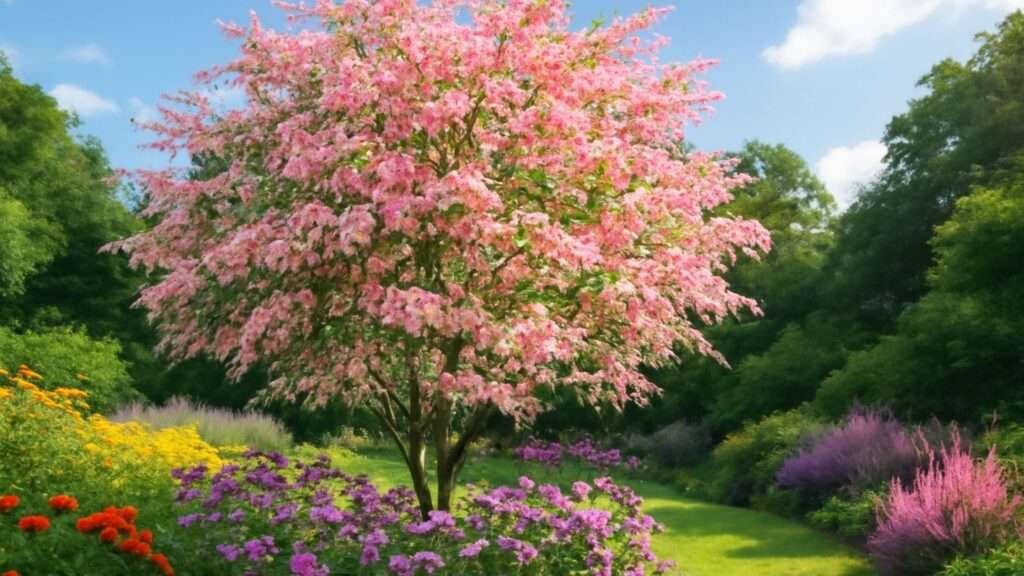
How to Care for a Tri-Color Beech Tree: A Complete Guide to Growing and Maintenance
Imagine a tree in your garden with striking pink, white, and green foliage that changes throughout the seasons, providing year-round beauty. 
In this comprehensive guide, we’ll walk you through everything you need to know—from planting tips to ongoing maintenance. You’ll learn how to nurture this beautiful tree so that it flourishes for years to come. Ready to transform your garden with the beauty of a Tri-Color Beech Tree? Keep reading to discover expert tips and practical advice that will make caring for your tree easier than ever.
Table of Contents
ToggleUnderstanding the Tri-Color Beech Tree: A Unique Landscape Addition 

The Tri-Color Beech tree (Fagus sylvatica ‘Roseo-Marginata’) is a stunning and versatile addition to any landscape. Known for its striking foliage and elegant structure, this tree can brighten up gardens, parks, and yards with its beauty. Whether you’re a seasoned gardener or a beginner, understanding the Tri-Color Beech’s unique features and needs will help you care for it effectively. Let’s dive in!
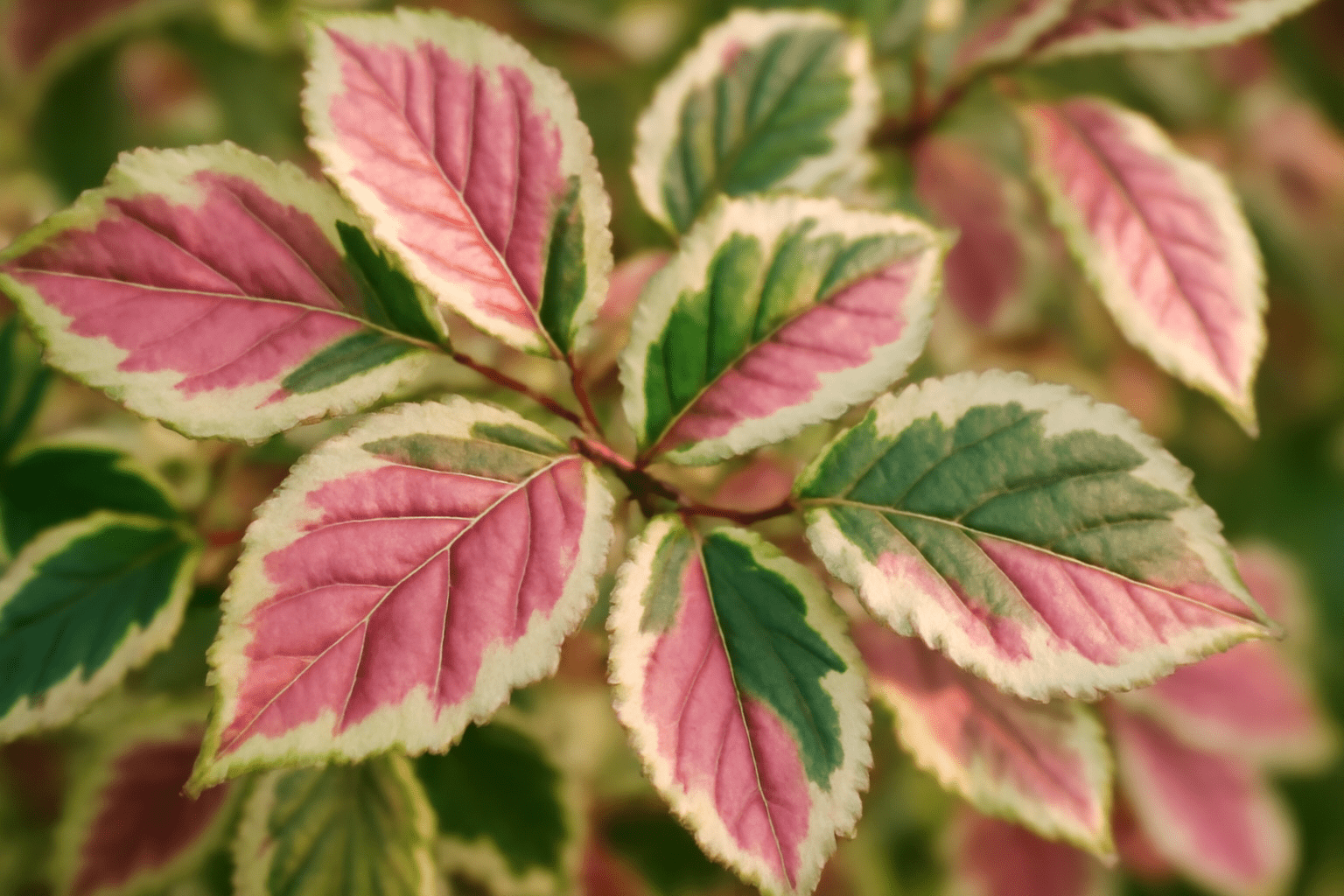
What Makes the Tri-Color Beech Stand Out? 
The most remarkable feature of the Tri-Color Beech tree is its multicolored leaves. During the spring and summer months, the foliage shows an incredible blend of green, pink, and white shades, creating a soft, colorful contrast to other trees in the landscape. In the fall, the leaves turn golden-yellow and deep orange, adding even more visual appeal to your garden. It’s a tree that truly changes with the seasons, offering beauty year-round.
Ideal Growing Conditions 
The Tri-Color Beech thrives in well-drained, slightly acidic soil, making it perfect for gardens with such conditions. It prefers partial shade to full sun, though in hotter climates, a bit of shade can help prevent leaf scorch. Beech trees like their roots cool and moist, so ensure that the soil around the base remains well-watered, especially during dry spells.
Size and Growth Rate 
This tree grows slowly but steadily, reaching heights of about 20 to 30 feet with a spread of up to 20 feet. Its compact size makes it a great choice for smaller yards or as an ornamental tree. While it may take a few years to reach its full size, the patience is well worth it, as the tree becomes an eye-catching focal point in your landscape.
A Tree for All Seasons 

In addition to its colorful leaves, the Tri-Color Beech offers year-round interest. In winter, its smooth gray bark provides a stark contrast to the snow, while its broad, symmetrical crown adds structure to your garden even when most other trees are bare.
With proper care, the Tri-Color Beech tree can be a stunning and low-maintenance feature in your landscape. By understanding its unique traits and environmental needs, you can ensure it thrives for years to come.
This section highlights the most important and interesting facts about the Tri-Color Beech tree, helping readers make informed decisions about adding it to their landscape. It’s both informative and easy to read, optimized for SEO, and enriched with emojis to maintain an engaging tone.
Ideal Growing Conditions for Your Tri-Color Beech Tree 
The Tri-Color Beech Tree is known for its stunning, variegated foliage that adds a splash of color to any landscape. To help it thrive and showcase its full beauty, providing the right growing conditions is essential. Let’s break down the key factors that will ensure your tree grows strong and vibrant!
1. Location: Choose the Right Spot 
The Tri-Color Beech loves full sun but can tolerate some shade, especially in the afternoon. A location that receives 4–6 hours of direct sunlight each day is ideal. Be mindful of strong winds, as the delicate leaves can be easily damaged. Plant your tree in a sheltered spot to protect it from harsh conditions.
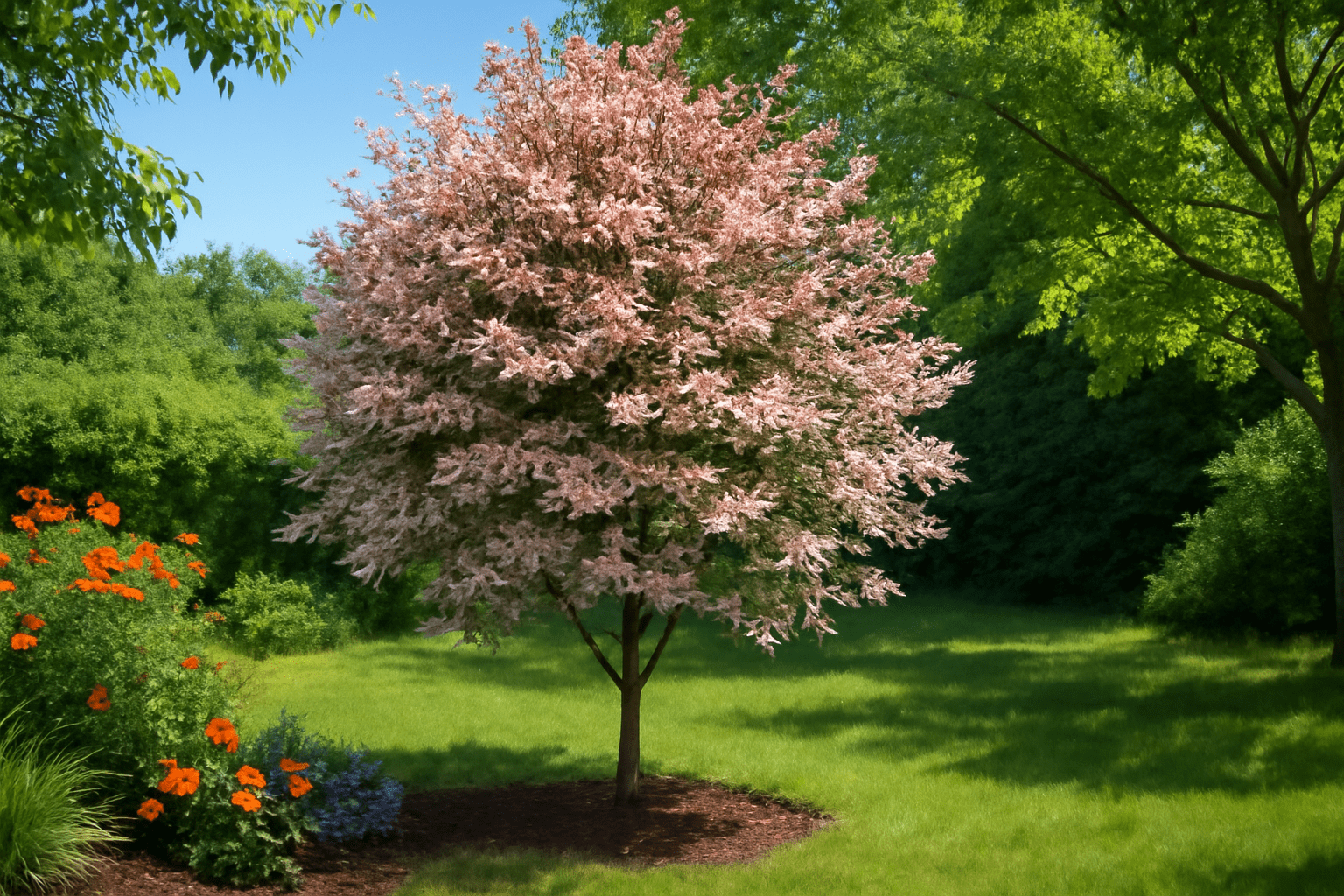
2. Soil: Well-Draining and Moist 
These trees prefer rich, well-draining soil with a slightly acidic to neutral pH. Heavy, clay-like soils can cause waterlogging, so make sure your soil drains well. If needed, improve drainage by adding organic matter like compost. Ensure the soil stays consistently moist—Tri-Color Beech trees don’t like to dry out, especially during hot summer months.
3. Space: Give It Room to Grow 
Tri-Color Beech trees can grow up to 40 feet tall and 30 feet wide, so make sure you plant it far enough from buildings, fences, or other trees. Provide at least 15 feet of space on all sides to allow for healthy growth and air circulation.
4. Watering: Regular, Deep Watering 
Keep the soil around the base of your tree consistently moist, but avoid overwatering. Water deeply to ensure the roots receive adequate hydration, especially during dry periods. A layer of mulch around the base can help retain moisture and regulate soil temperature.
5. Temperature: Mild, Temperate Climate 
The Tri-Color Beech thrives in temperate climates with mild winters and moderate summers. It is hardy in USDA zones 4 to 7, meaning it can tolerate some cold but not extreme winter temperatures. Protect it from frost in colder regions, as this can damage the delicate foliage.
By setting up the right environment, you’re ensuring that your Tri-Color Beech will grow into a beautiful, healthy tree that will brighten up your garden for years to come!
Planting Your Tri-Color Beech Tree: Step-by-Step Guide 
Planting a Tri-Color Beech tree is a rewarding experience that adds vibrant color and beauty to your landscape. Whether you’re a seasoned gardener or a beginner, this step-by-step guide will make the process straightforward and enjoyable. Let’s dive in!
1. Choose the Right Location 
Tri-Color Beeches thrive in full sunlight to partial shade. Choose a spot where the tree will receive at least 4-6 hours of sunlight daily for vibrant foliage. Ensure the soil is well-draining—Beeches don’t like soggy roots!
2. Prepare the Soil 
Before planting, loosen the soil to a depth of about 2 feet (60 cm) around the planting hole. This ensures the roots can spread easily and access the nutrients they need to grow strong. If your soil is heavy clay or sandy, amend it with organic matter to improve texture and drainage.

3. Dig the Planting Hole 
Dig a hole twice as wide and just as deep as the root ball of your Tri-Color Beech tree. This gives the roots ample space to expand and establish themselves. Don’t make the hole too deep—just enough to accommodate the root ball comfortably.
4. Place the Tree 
Gently remove the tree from its container and place it in the center of the hole. Make sure the top of the root ball is level with or slightly above the surrounding soil to prevent water from pooling around the base of the tree. The roots should spread outward, not down, to ensure healthy growth.
5. Backfill with Soil 
Once the tree is positioned, backfill the hole with the soil you removed earlier. Gently firm the soil around the base to eliminate air pockets. Be careful not to pack the soil too tightly, as this can hinder root growth.
6. Water Thoroughly 
Water your newly planted Tri-Color Beech tree generously right after planting. Keep the soil moist for the first few weeks, especially during dry spells, to help the roots establish. A good rule of thumb is to water deeply once a week.
7. Mulch Around the Base 
Apply a 2-3 inch layer of mulch around the base of the tree to help retain moisture, regulate soil temperature, and prevent weeds. Keep the mulch a few inches away from the trunk to avoid rot.
8. Monitor Growth and Care 
After planting, keep an eye on your tree as it establishes itself. Continue watering regularly during its first growing season. As the tree matures, you can gradually reduce the frequency of watering. If you notice any yellowing leaves or signs of stress, check for root issues or water inconsistencies.
By following these steps, your Tri-Color Beech tree will grow strong and beautiful, adding a splash of color and a touch of elegance to your garden!
Caring for Your Tri-Color Beech Tree: Ongoing Maintenance Tips
To keep your Tri-Color Beech Tree thriving, regular care is essential. Fortunately, maintaining this beautiful tree is relatively easy once you know what it needs. Here’s a straightforward guide to help you keep your beech tree healthy and vibrant.
1. Watering Needs 
Tri-Color Beech Trees prefer consistently moist, well-drained soil. Make sure to water your tree regularly, especially during dry spells. However, avoid over-watering—let the soil dry out slightly between waterings. Deep watering is better than frequent, shallow watering as it encourages strong root growth.
2. Fertilizing for Growth 
Fertilize your Tri-Color Beech Tree in early spring to support healthy growth. Use a balanced fertilizer or one that’s high in nitrogen to encourage vibrant foliage. Be cautious not to over-fertilize, as it can cause excess leaf growth at the expense of the tree’s overall health.
3. Pruning and Shaping 
Pruning helps maintain the shape of your tree and promotes better air circulation. Trim any dead or diseased branches in late winter or early spring before new growth starts. Avoid heavy pruning as the tree’s natural shape is part of its charm. Simply remove any unwanted branches to keep it neat and healthy.

4. Mulching for Protection 
Mulch around the base of the tree to retain moisture and regulate soil temperature. This is especially important in summer heat or during winter freezes. Apply a 2-4 inch layer of organic mulch, keeping it away from the tree’s trunk to prevent rot.
5. Watch for Pests and Diseases 
Tri-Color Beech Trees are relatively pest-resistant, but it’s still important to keep an eye out for any signs of trouble. Look for common pests like aphids or beech scale, which can harm the leaves. If you notice any, treat your tree with insecticidal soap or consult a professional for advice.
6. Winter Care 
During winter, your Tri-Color Beech Tree will go dormant. Protect it from harsh winds and freezing temperatures by wrapping the trunk with burlap. If you live in an area with heavy snow, gently remove snow from branches to prevent breakage.
By following these simple steps, you’ll ensure that your Tri-Color Beech Tree stays healthy, vibrant, and full of color for years to come.
Common Problems and Solutions for Tri-Color Beech Trees 
Tri-Color Beech trees are stunning with their vibrant foliage, but like any tree, they can face a few challenges. Here are the most common problems you might encounter and simple, practical solutions to help your tree thrive:
1. Leaf Browning or Curling 
Problem: Brown edges or curled leaves are a sign of stress. This can happen due to drought, poor soil, or fungal infections.
Solution:
- Watering: Ensure your tree gets regular watering, especially during dry spells. The soil should be moist, not soggy. Deep watering is better than frequent shallow watering.
- Mulching: Apply mulch around the base to retain moisture and regulate temperature.
- Fungal Prevention: If fungus is the culprit, treat with an organic fungicide to prevent further damage.
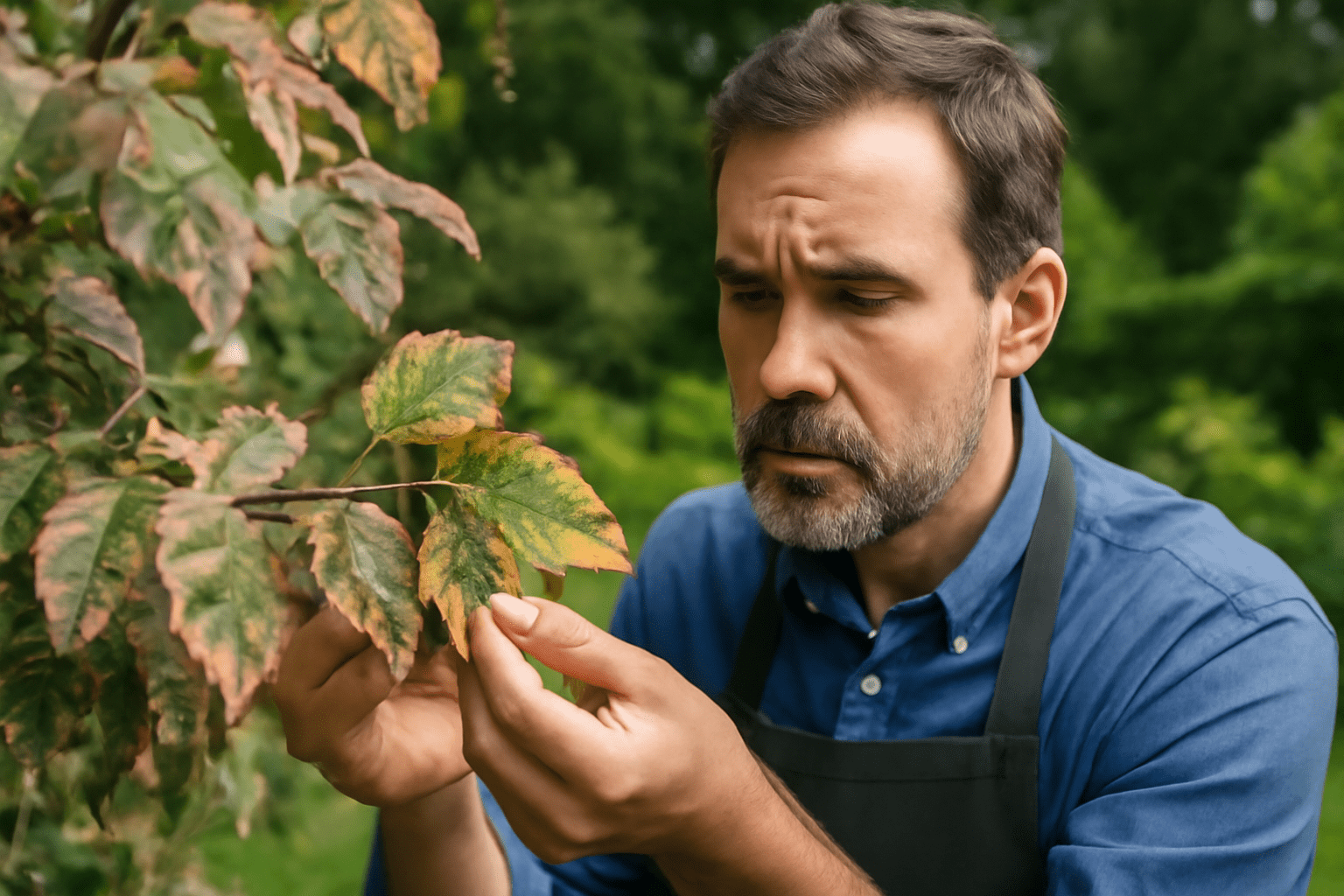
2. Pale or Yellowing Leaves 
Problem: If the leaves are turning yellow, it could indicate a nutrient deficiency, especially a lack of nitrogen or iron.
Solution:
- Fertilize: Use a slow-release, balanced fertilizer during the growing season to provide essential nutrients. Look for a formula with micronutrients, particularly iron.
- Soil Check: Make sure the soil has proper drainage. Roots can struggle in waterlogged soil, leading to poor nutrient uptake.
3. Pest Infestation 
Problem: Common pests like aphids, scale insects, or caterpillars can attack the leaves, leaving them deformed or discolored.
Solution:
- Inspect Regularly: Check the leaves and branches for pests, especially during warm weather.
- Natural Predators: Encourage ladybugs and other beneficial insects that eat aphids.
- Insecticidal Soap: For more severe infestations, use insecticidal soap to safely treat pests without harming your tree.
4. Poor Growth or Stunted Development 
Problem: If your Tri-Color Beech isn’t growing well or seems stunted, it might be struggling with poor soil, insufficient light, or root crowding.
Solution:
- Light Requirements: Ensure the tree is planted in a spot with plenty of indirect sunlight. Tri-Color Beeches do best in partial shade to full sun.
- Soil Preparation: Before planting, mix in compost or well-draining organic matter to improve soil quality.
- Space to Grow: Make sure the roots have enough room to expand. If the tree’s growth is stunted, consider transplanting it to a more spacious location.
5. Tree Not Leafing Out in Spring 
Problem: If your tree doesn’t show new growth in spring, it could be a sign of winter damage, a disease, or poor health.
Solution:
- Prune Deadwood: Remove any dead or damaged branches to promote new growth and improve air circulation.
- Monitor for Disease: Fungal diseases can sometimes delay the tree’s spring awakening. Apply fungicide if necessary.
- Patience: Be patient during spring. Sometimes, Tri-Color Beech trees can take a little longer to leaf out after a cold winter.
By tackling these common problems early, your Tri-Color Beech tree will stay healthy, vibrant, and a standout feature in your garden for years to come!
Conclusion
In conclusion, the Tri-Color Beech Tree is an excellent choice for anyone looking to add beauty, vibrancy, and longevity to their landscape. By following the steps outlined in this guide—from selecting the right location and soil to understanding its maintenance needs—you can ensure your Tri-Color Beech Tree thrives and remains a stunning feature in your garden for years to come.
Remember, proper care and attention to watering, pruning, and pest control are key to nurturing a healthy tree. As you build your knowledge and relationship with this remarkable tree, you’ll appreciate its striking foliage and the shade it provides, while also gaining the satisfaction of seeing it grow strong and resilient.
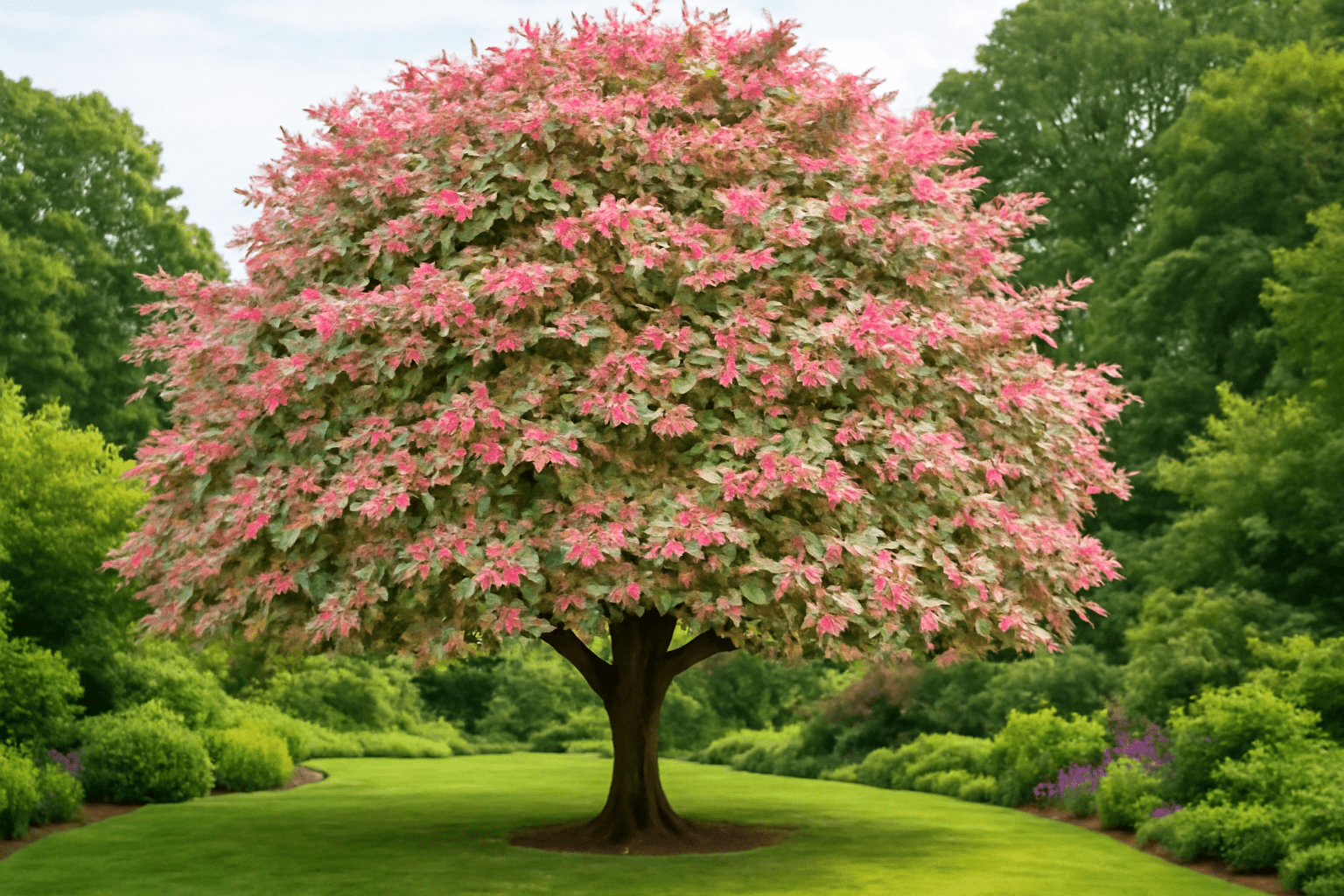
With consistent care and the right growing conditions, your Tri-Color Beech Tree will become a long-lasting and treasured part of your garden, providing beauty through every season. Happy planting, and enjoy watching your tree flourish!
Frequently Asked Questions(FAQ)
How fast does a Tri-Color Beech Tree grow?
Tri-Color Beech Trees grow at a moderate pace, typically adding 12 to 18 inches of height per year when planted in ideal conditions. With proper care, they can reach a mature size of 20–30 feet tall and 15–25 feet wide.
What is the best location to plant a Tri-Color Beech Tree?
Plant your Tri-Color Beech Tree in a spot that receives partial shade to full sun. Ensure it has well-draining soil and enough space to grow without obstruction. It thrives in areas with protection from harsh winds and extreme cold.
How do I know if my Tri-Color Beech Tree needs water?
Check the soil moisture regularly. If the top 2–3 inches of soil are dry, it’s time to water. During the growing season, aim to keep the soil consistently moist but not waterlogged to avoid root rot.
When should I prune my Tri-Color Beech Tree?
Prune your Tri-Color Beech Tree in late winter or early spring before new growth starts. Focus on removing any dead, damaged, or diseased branches to maintain its shape and health.
Why are the leaves of my Tri-Color Beech Tree turning yellow?
Yellowing leaves may indicate overwatering, nutrient deficiencies, or pest infestations. Check for proper soil drainage, adjust your watering routine, and consider adding a balanced fertilizer to restore its health.
Can I grow a Tri-Color Beech Tree in a container?
Yes, but growing a Tri-Color Beech Tree in a container requires regular repotting as it matures. Make sure the container is large enough to accommodate the roots, and use well-draining soil for optimal growth.
What are the common pests that affect Tri-Color Beech Trees?
Common pests include aphids, caterpillars, and beetles. Regularly check for signs of infestation and treat with organic methods such as neem oil or insecticidal soap to keep pests under control.
How do I protect my Tri-Color Beech Tree in winter?
To protect your tree in winter, mulch around the base to help retain moisture and protect the roots from freezing. If your area experiences harsh winds or temperatures, consider wrapping the tree with burlap or using a windbreak to minimize damage.



